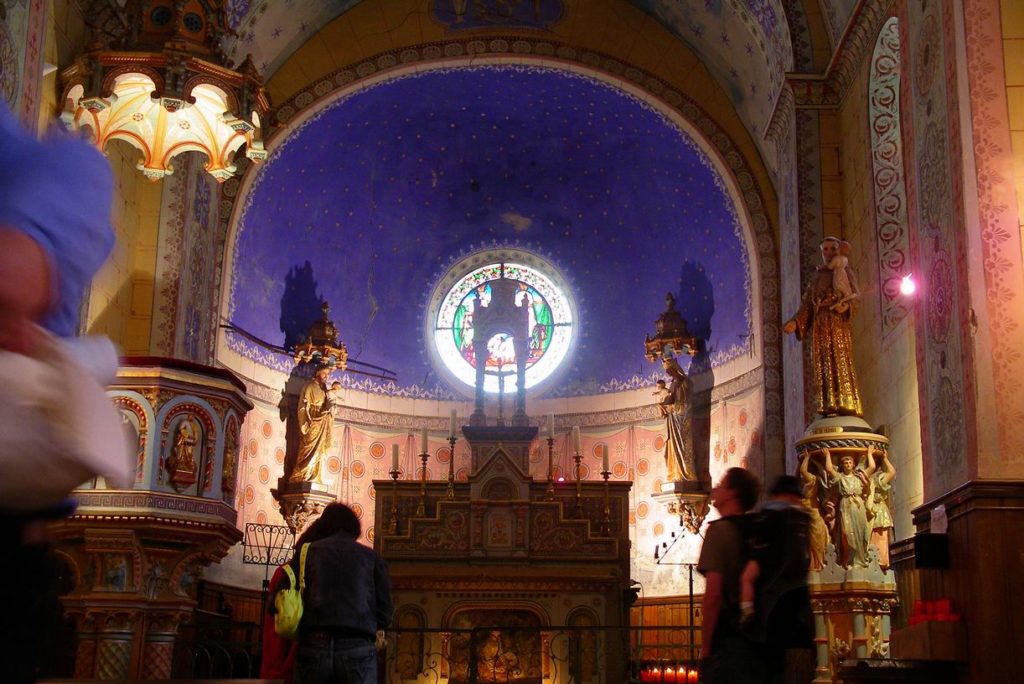
Introduction: Meditations in Catholic France
This is an unusual piece— fragmentary, highly personal, perhaps cryptic in places. It touches on, but hardly elaborates, much that moved through my soul over Noël 2006 in France. And what was moving then, as the title suggests, were my ongoing reflections on Valentin Tomberg, his continuities as well as discontinuities with Rudolf Steiner’s thinking, Dan Brown’s Masonic efforts and how very, very different France was from my native Anglo-American milieu. (I am American by birth, but my parents were British.)
A little context may be helpful. As readers of this site will know, I am a Catholic convert who followed Tomberg into the Church. And without Tomberg I would be at best a very New Age—y ‘esoteric’ Christian of the type that Tomberg came to (gently) criticise. (There is more below about that.)
I had converted at Easter 2000 and when the piece below was written in 2006, my wife Kim and I had recently moved to France in unusual and difficult circumstances. And we had begun to confront the profound heritage of Catholic France in places like Chartres, the Sacré-Coeur de Montmartre, and most importantly of all, Paray-le-Monial, the little French town wherein St. Margaret Mary Alacoque beheld apparitions of Jesus Christ and founded the Cult of the Sacred Heart of Jesus.
We had even made the first of several visits to Rennes-le-Chateau. Rennes-le-Chateau whose Nineteenth Century priest, the Abbé Berenger Sauniere, many associate with the Da Vinci Code, but who, it seems to us, was rather more a traditional Catholic monarchist than the subversive he is taken for . . .
We were also struck by France’s still marked distance at that time from the world-dominant Anglo-American breed of Capitalism, which distance is remarked on below in reference to Steiner . . .
Yes many things, grave things, were on my heart that Christmas time. And I ventured to jot some—again—highly personal notes for a weblog I once wrote. It was a little-known weblog and I had personal contact with a significant portion of its readers.
Now, a significant portion of these were familiar with the writings of Valentin Tomberg, who, of course, had once been both follower and proponent of Rudolf Steiner’s ‘esoteric Christian’ system of Anthroposophy—but who later in life converted to Catholicism and left Anthroposophy behind. All of which may seem odd indeed to the traditional Catholicism this website seeks to serve.
I do not deny it: I have an odd, esoteric and New Age past, for which reparation is needed. Yet however strange this piece is, it affirms nothing unorthodox, even if I raise unorthodox matters—such as Steiner’s Anthroposophy or the Da Vinci Code or even if I express a certain sympathy for some of Steiner’s thoughts pertaining to Anglo-American Masonry and Capitalism.
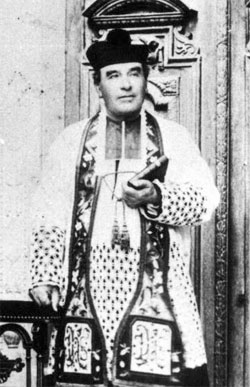
Yet although these latter may seem strange indeed, they are not contrary to Catholic faith. I do not make claims for these thoughts. They were simply things I was considering in that time—though the correspondences between Steiner’s assertions regarding Anglo-American secret societies and The Da Vinci Code (here and elsewhere) continue to haunt me.
Now, this piece assumes some familiarity with the story of the Catholic Hermeticist Valentin Tomberg and those lacking such may find portions of what follows obscure. One may consult the Internet in some cases to fill in missing gaps, but, alas, when it comes to things Tombergian the Internet is replete with massive errors and distortions. Caveat Lector!
The first section of these notes was published. The second part was promised, but never appeared. Now, at long last, I fulfil that promise by offering both pieces in a combined single text here. I am eliminating some extraneous and/or unfortunate material, but resisting the temptation to significantly revise the rest. (Though a few small revisions and additions have been made, mainly for clarity and emphasis.)
This piece then is a reflection of my thinking over that Christmas, pretty much as I wrote it then, as I was thinking then. I have since moved on to a more deeply traditional Catholicism, of which I speak further in an afterword.
From Noël 2006: On the Sacred Heart of Jesus

I am now in France, in a situation that is self-chosen, entirely self-chosen, and also demanding and precarious.
Now, in the past, for the sake of unknown friends, I´ve tried to keep strictly personal content to a minimum [i.e. in the weblog this originally appeared in].
But for once, I’ll allow myself some slack—and speak of more intimate matters, which may be more of interest to my known friends. I´ll also allow myself the slack of writing in an unstructured, fragmentary way. Some of what follows is not just fragments then, but simply scraps, scraps from the contents of my consciousness …
Yes, our situation is very demanding and it seems to Kim and myself, very, very rich. We have been a fifth time to Paray-le-Monial, where St. Margaret Mary Alacoque began receiving visions of His Sacred Heart in 1673 …
Day after day, we have been at Mass there and we have been in the profound stillness that can be felt in the chapels there.
“Avez vous bu le silence quelquefois?” Or in the English translation, “Have you ever drunk silence?”
This is a question the anonymous Catholic author of Meditations on the Tarot asks his readers.
But which he asked in FRENCH. He who had never lived in France or any French-speaking culture all his life!
Pourquoi? At any rate, this remarkable and very deliberate use of French is hardly unimportant to my theme!
But in the English translation, he continues:
If in the affirmative, you know what concentration without effort is.
Anonymous (Valentin Tomberg) Meditations on the Tarot, p 10.
And concerning this, he says:
It is the profound silence of desires, of preoccupations, of the imagination, of the memory and of discursive thought. One may say that the entire being becomes like the surface of calm water, reflecting the immense presence of the starry sky and its indescribable harmony.
And the waters are so deep, they are so deep! And the silence grows ever increasing … what silence! Its growth takes place through regular waves which, one after another, pass through your being: One wave of silence followed by another wave of more profound silence, then again, a wave of still more profound silence.
Anonymous (Valentin Tomberg) Meditations on the Tarot, p 10 .
Yes, in Paray I have experienced perhaps the deepest and most significant silence of my life. Now, I do not believe that the waves became as profound as our author suggests they can become. But, at least, the beginning of such waves did become present. I trust that.
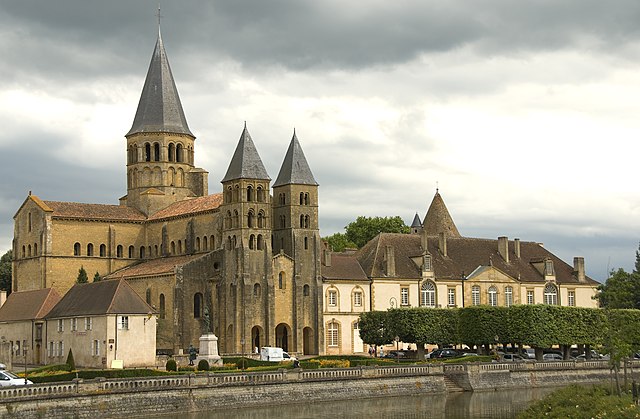
Some of the richest prayers of my life have been spent in silence before the relics of St. Margaret Mary and those of her Jesuit confessor, Saint Claude La Colombiere in their respective chapels. Also sitting before the Blessed Sacrament in another chapel in Paray, I felt moved to write these words in my journal:
There is this Sacred Story trying to unfold between Christ and us. He is trying to heal each and everyone of us. This is amazing. Amazing. Each and every one of us, he is trying to heal.
He is trying to heal ME and billions more like me. It is amazing … He is trying to heal us all. He is trying to heal me. That woman behind me. All of us. Amazing. Completely, utterly amazing. Heal me, and billions . . . like me. Each of us.
Yes, sitting before the Blessed Sacrament, I was with the faith that this healing was offered through an individual relationship with each of these uncounted entities …
He sought to reach out to each of us through individual relationship … ! And this has so many corollaries. One corollary I also noted in my journal at the time:
He can “use” each of us. (He never wants to “use” any of us!)
But he can extend through each of us. We can help him. We can help his work.

So, so many things to dwell upon in pondering this question: “How to help his work?” So many answers to that question. At one level, obedience. Obedience to the deepest matters one is able to discern in one’s prayer. Such obedience, I believe, led Kim and me to France, and to Paray-le-Monial.
Much unfolds for us around the sense of work to be done. Can I speak yet of it? Perhaps in halting fragments or even scraps …
On the Tragedy of Zany Catholicism
Friends, I am also more and more moved by a beauty I find in many writings, images, works of art associated with the immediate pre-Vatican II era. I who was first a fully fledged, card-carrying New Ager, then a liberal Anglican, then a liberal Catholic, and then …
Words fail. And in France, it seems to me, we see more than anywhere else I have lived, a most concerted effort to BURY the pre-Vatican II church.
The result it would seem are empty churches or a Catholicism my wife calls “zany.”
“Zany”. What does she mean by “zany?” Among other things, she means a Mass, wherein the Mystery of the Mass is no longer central. Where instead, what has taken centre stage is singing and entertainment, that is neither reverent or prayerful, but is animated at times by something bordering on inane or even manic …
At a Mass in the Pyrenees, my wife and I are looking up at a modern mural of the Resurrected Christ behind the altar. In this modern image, he smiles sweetly down at us, maybe even starts to grin …
But there is no GRAVITAS in this modern face of Christ. Is this an image of the Christ who weeps with us, as well as smiles? No, it is zany.
Again, how to do, to serve the work of Christ? Again, obedience. Including obedience to work with what life presents oneself. The example of Kim and I following our conviction of inspiration in coming to France is just one example.
And another example is of being presented here in France, with a dying, zany church, in which it seems to us, that Christ is obscured …
On the Da Vinci Code and Rudolf Steiner
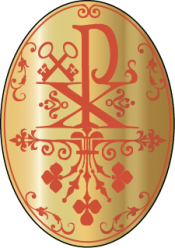
But life presents so much more, besides. Here is another example. This summer, life also presented me with the Da Vinci Code at last, and also some comments from Rudolf Steiner, the founder of Anthroposophy, which aspires to a so-called esoteric Christianity, opposed to the Catholic Church.
Around these two, so much could be said, but I must content myself with noting just a little.
Noting for example, that I am seeing a direct connexion between two statements. First, there is the statement that I find in the Da Vinci Code, regarding the Priory of Sion.
The Priory, like many European secret societies at odds with the Church, had considered English the only European pure language for centuries. Unlike French, Spanish and Italian, which were rooted in Latin – the tongue of the Vatican – English was linguistically removed from Rome’s propaganda machine, and therefore became a sacred, secret tongue for those brotherhoods educated enough to use it [Emphasis in original].
Dan Brown, The Da Vinci Code, p. 403.
And then there is the statement, or at very least implication, that Rudolf Steiner seems to make—that English is also a tongue which can so easily facilitate the aims of secret societies of a masonic nature, which he claims for decades have aimed to promote global capitalist domination, through that language.
Yes, in lectures given in Dornach in October 1920, Rudolf Steiner touches on these secret societies, speaking of invisible entities working through the people in them. He emphasises the role that English plays for this endeavour, noting that within peoples speaking Romance tongues (such as French), these same entities ‘would be extremely constricted’.
Yes, a claim is made that English is the preferred medium for what Steiner consider unChristian activity, as it permits
far greater freedom of action, far greater room to move in it
Rudolf Steiner, The New Spirituality and the Christ Experience of the Twentieth Century, p.
Yes, I am hearing a connexion between these statements from Dan Brown and Rudolf Steiner, and between these and much more besides.
For example, a recent cover of The Economist. That cover shows the tricolour of the French flag – blue, white and red – with the bold headline, “What France needs”. And in the middle panel, the white panel, below the headline, there is the image of Margaret Thatcher. My wife sees this cover and recoils in shock. I ask her why.

She says because she feels a striking paradox: For in one sense, she is here in France: “Margaret Thatcher” has already conquered France. And of course, globalised capitalism is everywhere. But in another way, my wife notes she really is NOT here yet …
I nod in agreement. No ‘Margaret Thatcher’ and all she so radically brought to Britain, if not Europe, in 1979 has still not fully reached France. That is why The Economist feels she is needed.
Like myself, The Economist can still feel her ABSENCE here.
For of all the European countries I know, I feel the greatest resistance to capitalist globalisation here in France. In many ways, I feel the greatest need to preserve tradition and soul here …
In many ways, I wish to repeat. Not all. As my wife noted, great contradiction and paradox exists …
What then, of Ireland, which I love with all my heart? Well yes, particularly in the still Catholic Ireland of the West, there is also a marked attempt to resist the colonising culture of global capitalism.
But in the East, where I also lived, alas, one feels much more the influence of this colonising influence, brought on a wave of Anglo-American impulses. That is, impulses that the French call ‘Anglo-Saxon’ And feel they need to resist. (In so many cases, at least.)
Yes, it seems to me that the French sense more keenly this loss of SOUL that the Anglo-American colonising impulses bring …
It is a quality of soul that Margaret Thatcher, it seems to me, did much, so very much to bury in Britain … bury beneath a culture, so-called, more and more exclusively dedicated to economic FUNCTIONS …
A “culture” that is, whose aesthetic, religious, spiritual, as well as political,legal and moral dimensions are more and more dictated by and hence, REDUCED to economic agendas.
Here is more of what Rudolf Steiner says of the beings working through the English language:
They have set themselves the task of keeping life as a whole restricted to the mere life of economics. They seek to gradually root everything else … to root out spiritual life, to chip away the political life and to absorb everything into the life of economics (Emphasis mine).
Rudolf Steiner, The New Spirituality and the Christ Experience of the Twentieth Century, p.
Yes, all this I ponder in connection with, again:
The Priory, like many European secret societies at odds with the Church, had considered English the only European pure language for centuries . . . a sacred, secret tongue for those brotherhoods educated enough to use it [Emphasis in original].
Dan Brown, The Da Vinci Code, p. 403.

On Materialism and Modernism
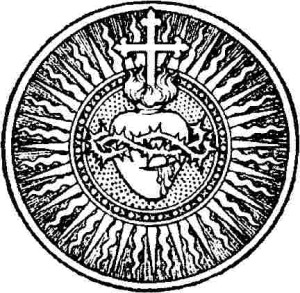
Yes, eighty years ago, Rudolf Steiner warned of the threat of reducing all of culture and politics to economic functions.
And now I feel it everywhere. A successful musician tells me how she left the record industry because of corporate pressure to make her music more commercial. University doctors tell me of the crass, commercial ethos that now pervades the academy, if academy it can still be called, for it has been dumbed-down to meet economic agendas. Artless, graceless buildings arise everywhere, sacrificing Soul for economic ends.
And children grow up in built environments of rigid angles and uninspired monotony.
And if individuals nations try to express their unique souls, there is indeed mighty pressure to conform, that is, to MARCH to the global capitalist beat. And everywhere people’s individual lives also become stripped of soul and mystery.
I receive e-mails which haunt my soul. One of my dear known friends, expresses the stripping of soul he experiences in his own life in America. Yes, here is a fragment from his letter that elaborates something far better than I can, at least right now, something well advanced in Asia and America – but now being summoned forth in Europe:
In this fast-paced, busy, time-starved, complex environment we’ve created, we are forced to compartmentalize our lives. For example: Up at 6:45, to work by 8, pick up the kids after soccer practice, throw together dinner, pay the bills, do the laundry, go to church at 10 a.m. Sunday, meet the parents for lunch, fix the fawcet in the kitchen…
Church, religion, spirituality, get compartmentalized along with all the other things we do in life. … Is it any wonder that the lessons and brotherly love we shared at 10 a.m. Sunday get brushed aside in the boardroom Monday, when we decide to up profits by laying off a thousand people?
… Connectedness — we’ve lost it in America, at least to a great degree. (That makes it easier to lay off people!) If you look at the European model of community and work, and weeks of vacation each year, and the East Asian model of all work and no play, America long has fallen in between. But we’re moving toward the East Asian model; in fact, we’ve been accelerating in that direction.
Nowadays, [with]greedy business owners and corporations … There seems to be a mentality spreading that ANYTHING that is good for a company’s profits is a good idea. Lying, stealing, cheating, destroying the environment and exporting jobs overseas … [We have ]an acceleration to the disconnected, dog-eat-dog jungle style of capitalism in East Asia.
Yes dear known friend, how your words strike my soul … “FORCED to compartmentalise” as you put it. Forced to acquiesce to an increasingly mechanical society that leaves no room for soul. And without soul, we move ever more to the self centred dog-eat-dog horror that you see so clearly …
Foreword for Monarchy by Roger Buck
On Secret Societies and the Sacred Fire of the Heart of Jesus
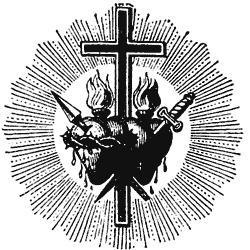
Yes all this, it seems to me, is not without connexion to the Da Vinci Code, and to Rudolf Steiner’s warnings more than 80 years ago about the dangers of a society conquered by the forces working through Anglo-American Secret Societies.
To a degree, France resists. And The Economist is NOT happy about it.
The Spirit of “Margaret Thatcher” simply must be summoned here as well. But she is still “constricted” …
What am I saying here? Am I insinuating? Or am I just pointing? Stammering and pointing: “Look there. Look there.”
Because for the moment, I can do no more than point and stammer. I will let you decide for yourself.
Yet the light of the love of Christ does indeed shine on in the darkness. In saying this, I am with an image that France gave to the world, or rather that Our Lord gave to the world, through France in the Seventeenth Century.

Through France, how the sense of that impressed my soul in Paray-le-Monial: Through France! The image then, is that of the blazing Sacred Heart encircled by a crown of thorns. Yes the encircling is very real. But how much more real are the blazing flames of love on the altar of His Heart …
Again, so much of this is representations of the contents of my consciousness, as I ponder the question, how is it that I am called to serve the work of Jesus Christ? What exactly is my vocation? Again, so much more might be said. Because so much has happened since Kim and I have come to France.
Through all of that, has come an ever deepening conviction regarding the work, the mighty work that is being done “to bypass the Mystery of Golgotha” as Rudolf Steiner once put it. The mighty work being done to obscure, that is, the Mystery of Jesus Christ …
Yes, we have the Da Vinci Code which would tell us, as its leading protagonists do, that:
Almost everything our fathers taught us about Christ is false.
Dan Brown, The Da Vinci Code, p. 235.
and that
Nothing in Christianity is original.
Dan Brown, The Da Vinci Code, p. 232.
Thus, millions are led to suspect, if not believe, that almost the entire content of two thousand years of mystical experience, work, thought, prayer and revelation, are nothing but a spurious rehash.
There is nothing then inspired with all these mystics, theologians, philosophers and saints. At best, they are dupes. And at worst? Those who would follow Dan Brown can only conclude that everything from the original writers of the Gospels to all the Christian mystics and saints, all of these, all, are at best, deluded. That which the Church teaches us about the Mystery of Christ has almost nothing to do with the truth.
But to return to my theme, the true question in my heart is, again, how to help to serve His work. Ranting about The Da Vinci Code will not achieve that. Although perhaps what will, perhaps what will, is really allowing myself to WEEP at the immense, unfolding tragedy to which those best selling pages speak: the full-scale tragedy of the vast attempt to bury Christ … Yes, not to rant, but to weep, to weep and act …
Am I weeping enough? Am I acting enough? These are questions in my soul. As I ask them answers come. I do not know if they are true.
On Valentin Tomberg’s Turning Away from Anthroposophy
Still, it seems to me there is needed work to be done. A work that seems to me to involve much. It involves a certain listening to the legacy of Rudolf Steiner, who, unlike Dan Brown, proclaimed the unutterably sublime depths of the Mystery enacted by Christ on Calvary.
But a ‘certain listening’ to Steiner – such as his grave warnings concerning those who would ‘bypass the Mystery of Golgotha” – is not the same as subscribing wholesale to so-called ‘esoteric Christianity, divorced from the Church.
Still, the course of my life and providence it seems to me, has led me to engage with Anthroposophists and try to understand their position. Steiner’s tragic condemnation of the Church, it should be noted, is not entire. He seems to have some degree of honouring the Church up through the medieval era.
Yet Steiner attacked what he considered to be a rigidity and materialism of the post-medieval Catholic Church. He also deeply criticised the Jesuits who pioneered so much of the so-called Counter Reformation Catholic Church, whose work he considered most ‘dangerous”.
And yet this future work I see, also draws on the legacy of Valentin Tomberg. And Valentin Tomberg saw things very differently to Steiner in regards to the Jesuits and the Counter-Reformation.
As he writes in his Lazarus Come Forth, Valentin Tomberg considers that with
The spiritual exercises [of St Ignatius] it was a matter of awakening the whole human being to the reality of Christianity through inner experience. Through the meditative training people became MORE than pious; they became witnesses to the truth of Christianity.
Human beings emerged from the meditative training of the spiritual exercises to wholly devote themselves, out of their own deepest knowledge and conscience to the redemptive truths of Christianity.
What was usually experienced – more dreaming than awake – through pious devotion became in this experience of meditation a matter of burning conscience, a challenge to action and an overwhelming awakening to the reality of redemption, the Redeemer and the saints.
Valentin Tomberg, Covenant of the Heart, p 96.
Yes, the Catholic Valentin Tomberg is saying something very different indeed to the esoteric Steiner. Now, what strikes my heart as I consider the profound disagreement between Steiner attacking the Church and Tomberg, profoundly loyal to the Church, is that much that is at issue here, revolves around how we consider the human personality of Jesus Christ.
For Rudolf Steiner, the Jesuits were ‘materialistic”. He tells us thus:
Because Christ had to be incarnated in a physical body, the purely spiritual took part in the physical world; but over against this participation stand the monumental and most significant words of Christ: “My kingdom is not of this world.”
But for Steiner, Jesuitism misses all of this. In Jesuitism, Steiner believes ‘the Jesus principle is exaggerated.” Ignatius, Rudolf Steiner also tells us, wanted ‘to represent everything to do with Jesus in a purely material way.”
Now, there are also many other objections made by Rudolf Steiner to the Jesuits. This one of materialism is hardly all encompassing. But I am focussing on this, because it may be at just this very point that the Catholic Valentin Tomberg began to part company with the Anthroposophy of Rudolf Steiner.
For it seems clear to me that what Valentin Tomberg is saying has gone wrong with so much of so-called esoteric Christianity, including Anthroposophy, is that the human, concrete aspect of Christianity has gone missing – in favour of the Logos. And perhaps this in turn could lead to blindness as to that which the Church offers …
Thus at one point Tomberg writes that although LIGHT is present in a Christianity that focusses on the Cosmic Christ, magic, warmth and personality and LIFE may be missing:
The tendency is certainly accentuated, if not prevalent, amongst contemporary Hermeticists to occupy themselves more with the “Cosmic Christ” or the “Logos” than with the human person of the “Son of Man”, Jesus of Nazareth. More importance is attributed to the divine and abstract aspect of the God-Man than to his human and concrete aspect …
It must be pointed out, in the first place, that it was not the revelation or knowledge of the cosmic Logos which gave rise to the new spiritual impulse that manifested itself in the apostles, martyrs and saints – which we call “Christianity” – but rather the life, death and resurrection of Jesus Christ. It was not through the name of the Logos that demons were exorcised, the sick were healed and the dead were brought back to life, but rather through the name of Jesus …
It was contact with the person of Jesus Christ which opened up the current of miracles and conversions. And it is the same even today … it was Jesus Christ who gave to the idea of the Logos the warmth and life which created living Christianity, whilst the idea of the Logos, held by the sages of antiquity, although it was true, was lacking this warmth and life. And it is the same even today” (Emphasis mine).
Anonymous (Valentin Tomberg) Meditations on the Tarot, p 192.
And in Lazarus Come Forth, Valentin Tomberg speaks of Rudolf Steiner’s Anthroposophy, noting that:
The third aspect of the Way, the Truth, and the Life – namely life – was not given enough attention. For the scientific form into which the logic of the Logos had to be cast, and by which it was limited, left little room for pure mysticism and spiritual magic, that is for life. So there is in Anthroposophy a magnificent achievement of thought and will, which is however, unmystical and unmagical, i.e. in want of life. Rudolf Steiner himself was conscious of this essential lack. Therefore it was with a certain amount of hope that he indicated the necessary appearance of a successor (the Bodhisattva) who would remedy this lack and would bring the trinity of the Way, the Truth and the Life to full fruition” (Emphasis mine).
Valentin Tomberg, Covenant of the Heart, p. 70
And Valentin Tomberg has also served to make it very clear to me, that these lacking elements CAN be found in the Catholic tradition.
Yes, Valentin Tomberg is saying that the esoteric Christian system of Rudolf Steiner is deprived of of life. But he hardly seems to think Jesuit Counter Reformation Catholicism was so deprived . . .
For unlike Rudolf Steiner, Valentin Tomberg certainly affirms the value of the Counter-Reformation, saying again in Covenant of the Heart (now republished as Lazarus Come Forth) that this last
Should not be understood as anti reformatory, but as a true reformation. For the movement toward interiorisation and spiritualisation which arose then in the Church was indeed, in a real sense reformation, and in no sense a process of outer revolt – destroying images and annihilating Church hierarchy, and doing away with the spiritual orders and the three vows. A monastery, for instance, is not reformed by chasing out the monks, but by bringing in a more interiorised spiritual life … The so-called Counter-Reformation and the so-called Reformation stand in the same relationship to one another as the spiritualisation of the monasteries stands in relation to their dissolution. The first was an impulse toward inner transformation; the second signified “rebellion” and “purge”. The one meant “evolution”, the other signified “revolution”.
Valentin Tomberg, Covenant of the Heart, p. 97
Yes, there is this beauty, I sense in the Counter Reformation Catholic Spirituality that is so sidelined in our time. And the future work I see involves all of this and more. It involves also the striking fact that Valentin Tomberg, a Russian author who lived in England, nevertheless chose to write so much in FRENCH.
And it involves the immense French legacy of the experiences of St. Margaret Mary Alacoque who beheld His Sacred Heart in 1673. A legacy which seems so very tied up with the Jesuits. A legacy which served to inspire profound resistance to the Revolution of 1789. A legacy with countless shadows and contradictions. A legacy which may be more profoundly relevant to THE SOUL OF FRANCE, and to the world, than even I dare to imagine yet. (More that is relevant can be found here regarding Catholic France and the Sacred Heart.)

And so much more this work I see involves. But one more thing I will leave you. It is a translation of a few lines from a German book by Martin Kriele, who guards Valentin Tomberg’s estate, and who knew him during his life. I hope that Doctor Kriele can forgive my use of these brief lines from his book. They clearly amplify the above themes and the book is unavailable in English.
Occasionally [Tomberg] spoke of evil in which he saw not only a “lack of being”, but very real powers manifold and chaotic. One should not occupy oneself excessively with it but pay attention to evil in the seductive form of seeming good, its method of adopting something beautiful and half-true which deceives us and leads us unwittingly into evil.
He was concerned with the art of the discernment of spirits which was needed particularly also in matters of politics and political philosophy. In this context he held Vladimir Soloviev’s writings in high esteem.
If people were afraid of evil occult groups and “conspiracies”, this was not principally unjustified – they did in fact exist – but most of the time, one did not understand how to localize them accurately. Thus the talk of a “Jewish world-conspiracy” had been a fateful lie. But in fact sinister occult forces had worked in Hitler’s and Lenin’s movement.
To counter these there was a need for a “white” Christian Esotericism of Good which alone was up to this task. It could unfold “magical” effects if the will of man is in perfect harmony with the will of God. In “Scottish” Masonry, whose center in London had been destroyed during the war and relocated to New York, he saw a dangerous occult counter current. It would lure man with the promise of humanity – but with the aim of a world without Christ and without death and resurrection … He described to me the methods of working of the sinister counter-occultism, for example its influence on language, manners of speech, ideological forms of thinking and the fostering of all sorts of enemy-polarisations.
He took the occultism without Christ which based itself on the Theosophy of Blavatsky and worked out of the Indian-Tibetan region very seriously. It was very influential from the background. It was for example partly instrumental in the spread of Bolshevism, in the benevolent neutrality towards it, in the threatening east-west polarization but also in the “esoteric” youth movement of the “New Age” which began to flourish at the time.
History is like a chess board with white and black figures. One could never clearly foresee which moves the enemies prepared from out of the dark. Therefore no certain prophecy was possible … It could well be useful to reveal what the enemies still wanted to keep hidden. The most effective counter measure though was to turn to Christ, prayer, contemplation, the cultivation of love and kindness of heart.
Everything in Tomberg’s thinking revolved around one center: Christ. His greatness and glory he said, full of reverence, was so immeasurable that every attempt to imagine it stayed far behind the reality. When he spoke of Christ his language took on the tone of gravity and deeply being moved familiar to us, from the Gospels, especially the St John’s Gospel. Him he loved with every fibre of his heart. In His service, he placed himself without any reserve and through Him in the service of the Father.
Martin Kriele, Anthroposophy und Kirche, p. 197.
Friends, I am either mad, or I am aspiring to the Hanged Man of which Tomberg writes that he acts first, then he desires, and lastly he understands. Which is to say, I do not yet know where all of this is going.
In the meantime, I recommend to all Catholics who can do so, a pilgrimmage to Paray-le-Monial, where it seems to Kim and me that his Sacred Heart can STILL be felt, more than 300 years after 1673 …
Foreword for Monarchy by Roger Buck
Afterword: On Tomberg and Guarding Catholic Tradition
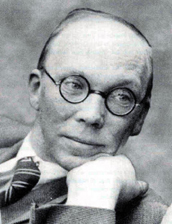
Years have passed since the above was written. Pointing and stammering indeed!
Is there more to be said about the above themes? Indeed, there is and much of this entire website aspires to its ongoing unfoldment.
Yes among other things, I hope to explore much further the themes of the Sacred Heart, Catholic France, the growing problem of world materialism and capitalism. I want to explore the hope I have come to find in the tradition of the Church, and also the need I see to guard that tradition in the face of such diverse threats as a zany Novus Ordo, the Da Vinci Code or a so-called ‘esoteric’ Christianity which assaults the Church …
What has been the cost of the various attacks on the Church from the domain of Christian Hermeticism, I wonder? What would have been the benefit to the Church and the World, if more of these Christian Hermeticists became loyal sons of the Church—the way Valentin Tomberg did?
What is to be done in a world increasingly buried in materialism or New Age forms of spirituality that cannot comprehend the Sacrifice on Calvary?
In keeping with the highly personal nature of this piece, I offer some highly personal responses. When the above was written, Kim and I had visited Paray five times. In total, we have now visited more than twenty times. For us, it is the most astonishing place we have found on this earth. There the beating Heart of Jesus Christ can still be felt. There we have felt bathed and cleansed in the Love of that Heart.
There have actually been some terribly hard times. But in Paray, like nowhere else on Earth, I have felt held in the arms of Christ, held and soothed . . .
And there I have been led by the Grace of God to say more deeply than ever before, YES to the Traditional Catholic Church.
Now, in this connection, with Paray and Tomberg, there is something striking that should be noted. When the above piece was written in 2006 I did not realise this—but Valentin Tomberg actually spoke concerning Paray-le-Monial!
And for me personally, this discovery has been astonishing! As though my jaw dropped open . . .
Allow me to explain. The relevant text is from the final paragraphs of an unfinished manuscript – written shortly before Tomberg’s death – that has been published in a book called Covenant of the Heart or Lazarus Come Forth. It is a book less well-known than Tomberg’s Magnum Opus. I had read it several times before I discovered Paray, but not recently before that life-changing discovery.
And I had forgot the text below—completely forgot. Thus it came to me afresh, only after many visits to Paray-le-Monial and life-transforming things that happened there. Yes, only then, did I re-discover the following text, whereupon my jaw fell open …
Now, Paray is not mentioned specifically, but the context and timing given (‘second half of the seventeenth century’ etc.) leave no room for doubt. Tomberg cannot mean anything other than the events beginning at Paray-le-Monial in 1673 whose effects then spread out through Catholic countries across the world:
There have been (and still are) times in Europe and elsewhere during which for whole nations the life of the soul as such has been (and still is) in grave danger, having been smothered and reduced to a minimum.
This holds not only with respect to the tidal wave of materialism that has flooded across the world in this century, but also for the outpouring of “intellectual enlightenment” during the age of rationalism in the eighteenth century which paved the way for materialism.
At that time the danger facing the human soul was so great that, in order to avert it, a special intervention from heaven proved necessary as a preventive measure.
This took place during the second half of the seventeenth century. It was then that the revelation of the most sacred heart of Jesus occurred.
This led to the cult of devotion to the most sacred heart of Jesus which spread rapidly in Catholic countries and took root there. Devotion to the sacred heart of Jesus was to save the soul of humanity.
For, with the intellectual enlightenment the danger threatening to break in upon human beings was that of the centaur.
Human beings would have been turned into a kind of centaur — a being consisting of head and limbs (intellect and will), but without heart — that is, a “clever beast”.
Devotion to the sacred heart of Jesus had the task of rekindling the heart. Thereby the light, warmth, and life, streaming from the heart of Jesus, was to counteract the will-to-power and the intellect serving this will.
Valentin Tomberg, Covenant of the Heart, p. 255
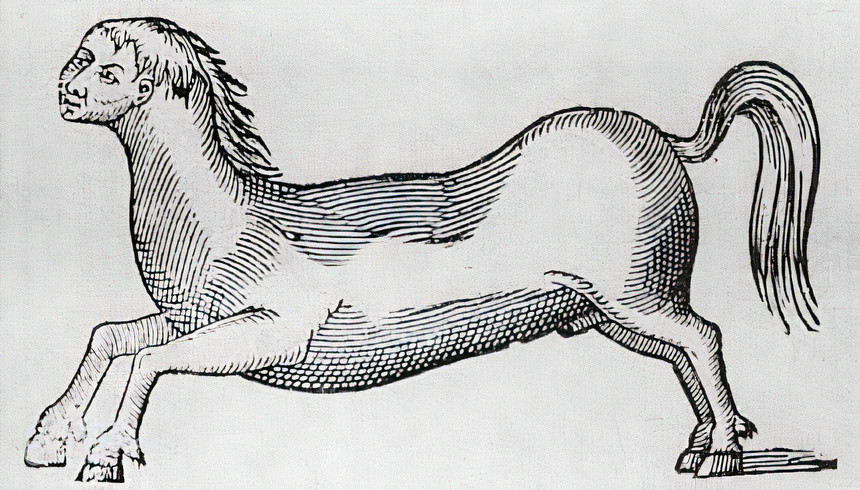
For Valentin Tomberg then, Paray was the site of an extraordinary miracle—again ‘a special intervention from heaven’—to arrest the animalistic danger of what he calls the centaur: the condition of intensified will, intensified thinking (of a degraded kind)—and no heart. And the danger so evident in the modern brutal capitalist, materialist world arising all around us.
For Tomberg, the Revelation of the Sacred Heart had incalculable effects, yet still the danger was not conquered. He continues:
Be that as it may, the soul – understood as the most refined and deepest life of the heart – is by no means certain of survival, not even within Christian, civilized mankind. All kinds of dangers threaten, and destruction is an ever-present danger. The life of the soul has to be cultivated and stimulated, as took place (and is still taking place) with the help of devotion to the sacred heart of Jesus. What deeply moving moral deepness and beauty can be seen and experienced through devotion to the sacred heart of Jesus!
Valentin Tomberg, Covenant of the Heart, p. 255.
What can I say?
At Paray, I had some of the most meaningful experiences of my life. But only later did I see that Tomberg spoke of what happened there as renewing the forces of the heart and providing the key to navigating the threat of ‘destruction … an ever present’ danger.
Through all this, I came to the conviction that what is needed – now as ever – in this time of serious global danger, is the defense, conservation and clarification of the Catholic Mystery. For this, I pray that I can humbly work at this website.
But I would like to return to the so-called ‘esoteric’ Christianity – divorced from the Church – of the Anthroposophists who follow Rudolf Steiner.
Now, such may object to my speaking in terms like this (with quotation marks and such). But I take my cue from Tomberg:
Christianity … is one and indivisible. One should not – one cannot! – separate from so “exoteric” Christianity … so-called “esoteric” Christianity. Esoteric Christianity is entirely within exoteric Christianity; it does not exist – and cannot exist – separately from it.
Anonymous (Valentin Tomberg) Meditations on the Tarot, p. 590
Yes, Tomberg lost faith in the notion of a separate esoteric Christianity from the Church. But in his youth, this had been his main hope to combat the growing heartlessness of a world plunging into materialism.
But now he advocates devotion to the Sacred Heart of Jesus—something that Rudolf Steiner and the Anthroposophists could never do. For as we have intimated above, Steiner was hostile to the post-medieval Church, particularly Jesuitism and the Sacred Heart devotion spread from Paray after 1673 was a Jesuit devotion . . .
At any rate, Valentin Tomberg, made a transition from the idea of an independent ‘esoteric’ Christianity to a being a faithful and traditional son of the Church. And because he made such a transition, he may well help others to do the same.
And yet there are those who cannot believe that Tomberg made any transition at all. Despite his countless declarations to the contrary, some believe that Tomberg’s turning away from Anthroposophy to the Catholic Church is camoflauge or fanciful thinking!
For this reason, I would like to return to his final writings collected in Lazarus Come Forth. They are not only germane to all the above, but they also make clear that Tomberg now placed his faith in the Catholic Mystery and not an esoteric Christianity separate from it:
The Christianity of the hermits … was no passing phenomenon limited to a few centuries only. Today it still lives with all the intensity of its youth. Though it may not be deserts and thick forests into which one can retire into an undisturbed solitude nowadays, there are still people who have found or created in the deserts of the great cities and among the thickets of the crowds, a solitude and stillness of life for the spirit.
And as before, their striving is devoted toward becoming a witness for the truth of Christianity. The way into the depths has not led them to an individualistic brand of belief, but has given them unshakable security in the truth of Christian revelation as transmitted and taught by the Church.
They know the truth of the following: Extra Ecclesiam non est salus (“there is no salvation outside the church”); the Holy Father is not and cannot be the mouthpiece of an ecumenical council; the Holy See alone can make decisions in questions of faith and morals – a majority of the bishops cannot do so and even less can a majority of priests or congregations do so; the Church is hierarchic-theocratic – not democratic, aristocratic or monarchic – and will be so in all future times; the Church is the Civitas Dei (“the City of God”) and not a superstructure of the will of the people belonging to the Church; as little as the shepherd follows the will of the herd does the Holy Father merely carry out the collective will of his flock; the shepherd of the Church is St Peter, representing Christ – his pronouncements ex cathedra are infallible, and the power of the keys of the kingdom of heaven belongs to him and him alone.
In other words, those who become solitary in order to seek profundity may reach on their path of spiritual experience to the unshakeable insight that the dogmas of the Church are absolutely true. And so it can happen that, as they did at the time of the Arian darkening of the Church, the “hermits” of today may come again to the assistance of the Holy See, leaving their solitude to appear as witnesses to the truth of Peter’s throne and its infallible teaching. In those times it happened that St Anthony of Thebes left the desert and hurried to Alexandria to support St Athanasius with the weight of his moral authority – St Athanasius who became the standard bearer for the divinity of Christ.
The darkening which today is described as “the present crisis of the Catholic Church” can lead to the necessity for the solitary sons of the Church to hurry to the aid of the Holy Father, the most solitary of solitaries, in order to save the Church from the abyss toward which she is moving. ..”
Valentin Tomberg, Covenant of the Heart, p. 124-125.
For me, these are words to be pondered deeply. Now, from the greater context of his Catholic writings, it is clear that Valentin Tomberg was not invoking an everlasting damnation – sans any choice or means of escape – for those outside the institution of the Church. Yet it is equally clear that he is also saying: The Church and its mystical structures – including the (very seldom invoked) capacity of the Pope to speak ex cathedra – are hardly there for nothing!
Here and elsewhere, he departs radically from Rudolf Steiner’s Anthroposophy.
Yes, Tomberg once spoke of “the tragedy of Anthroposophy” and it seems clear to me at any rate, that his entire life story attests to the tragedy he saw – on a grand scale – in trying to live Christianity outside the Church. This I think is relevant to ponder, when he speaks of Extra Ecclesiam non est salus.
Now, these words from Tomberg above, were also written in the wake of the Second Vatican Council. Tomberg’s attitudes towards this form another topic germane to this piece, for they reveal —contrary to the Anthroposophists—just how much faith Tomberg placed in the kind of ‘rigid’ pre-Vatican II Catholicism so abhorred by Steiner’s followers. Because significantly, I think, Tomberg had nothing good to say of the liberalising changes of Vatican II. He writes:
The Council for which Pope John XXIII prayed did in fact fail.
And he explains that assertion as follows.
It happened that the “second Pentecostal miracle” hoped for and prayed for by the Holy Father – the proclamation by the World Council of a deepened, elevated and expanded treasure of Church revelation – was replaced by a policy of “keeping in step with the times”. The Council did not reflect the timeless inspirations of heaven, but rather the earthly needs, complaints, wishes and demands of the age [Emphasis mine]. It became a sort of religious parliament with a “progressive left”, a “conservative right” and a “moderate center”. Thus people spoke of a “democratisation” of the Church, now breaking through. The “world” remarked with satisfaction: the Catholic Church is moving closer to us; yes, just a little while and it will be part of us – the Council exudes a “fresh wind”, the wind of a free and modern spirit!
And he continues:
A fresh wind did indeed blow from the Council. It blew up such problems as the abolition of the celibacy of priests suddenly become pressing; the problem of mixed marriages with those another faith; the problem of acceptability of the “pill” and other methods of contraception; the problem of “demythologisation” of the Holy Scripture and of tradition; the problem of the Mass, in the sense of abolishing Latin as the liturgical and sacred language and the substitution for it of many other languages …
Valentin Tomberg, Covenant of the Heart, p. 110-111.
Now, in this afterword, I have been referring to personal, interior processes which have led me to conviction, including the conviction of the crying need to aspire to guard the Catholic Tradition – a need as grave as ever, in this epoch where the Christian Mystery is being buried by materialism and New Age spirituality.
It is clear to me Valentin Tomberg came to similar conclusions. And again, his voice commands profound respect. As others can attest, one may find that his writings possess a moral seriousness and lucidity unsurpassed by anything else one has found. He speaks thus with authority. It is this authority that led me to become Catholic and ever more deeply affirm with him:
May the Holy Scriptures be holy for us; may the Sacraments be Sacraments for us; may the hierarchy of spiritual authority be the authority of hierarchy for us …
Anonymous (Valentin Tomberg) Meditations on the Tarot, p. 410.
Yes in this most personal piece, may I say that there was a time when I was still a rather New Age and so-called “progressive” Catholic. In that time, Valentin Tomberg’s account of Vatican II disturbed me deeply. I found his account of the Council more difficult than anything else in his entire writings. I can even recall vividly when first I read his words on Vatican II: I was sitting outside in central London in 1998 and my heart was sinking …
Many, many years later, it now seems to me that Valentin Tomberg understood very well the kind of dangers Vatican II would unleash for the Church. And that he understood very profoundly the dangers of the forces working to destroy Christianity in the world.
He understood the kind of thing to which the Da Vinci Code testifies. Towards the end of that book, Dan Brown suggests the election of a future pope John XXIV – with the apparent hope this Pope will carry the “the Spirit of Vatican II” agenda through to its logical conclusion – a thoroughly de-Catholicised “Catholicism”:
The new Pope settled into his first year in office. An unprecedented liberal, His Holiness had secured the papacy through one of the most controversial and unusual conclaves in Vatican history. Now, rather than being humbled by his unexpected rise to power, the Holy Father had wasted no time flexing all the muscle associated with the highest office in Christendom. Drawing on a . . . tide of liberal support within the College of Cardinals, the Pope was now declaring his papal mission to be . . . “updating Catholicism into the third millennium.”
Dan Brown, The Da Vinci Code
Yes, it would seem clear that the Da Vinci Code agenda wants to bury the Mystery of Calvary. Either by destroying it outright or by creating a new “Church”, where it is so watered down as to be completely “harmless”. “Harmless” that is to certain people’s objectives.
All of this suggests to me, at any rate, that there are those who still see the Catholic Church as a danger to their goals.
Otherwise, they would not be mounting so much effort, in order to render her “harmless” – including perhaps hijacking the story of a traditional Catholic monarchist priest at Rennes-le-Chateau and manipulating it for certain ends. This again is but more pointing and stammering: “Look there! Look there!” If you will …
These are grave matters. They are ones that I have wrestled with for years in search of a creative response. I am still wrestling.
What can I say now? As this piece indicates, once I was a New Ager, then a liberal Anglican, then a liberal Catholic who believed passionately in Vatican II.
Year after year processes involving prayer, took me to a more traditional position. Above, I often speak in negative terms about the dangers to the Church. These are real indeed and the zany manifestations of the Novus Ordo seem ever more damaging to me.
No need for Dan Brown and his Da Vinci Code, while the Church auto-destructs …
But this piece began on more positive tones – on the love of the Sacred Heart for each and every one of us. This being a very personal piece, I will finish on a very personal note. Since entering the Catholic Church, I find the love of the Sacred Heart in a kind of experience I never had before in my life.
I have experienced it through the Sacraments of the Church, daily Mass and regular confession.
This experience of living with the meeting with Jesus Christ through the Sacraments is indescribably precious. Indescribably – words fail utterly. But still I venture these: it is the preciousness of keeping with a warming, strengthening, affirming, solidifying current of communion, which moreover helps me to be bear so much that I could not otherwise bear …
Once I was a New Ager who acquiesced to the New Age doctrine that all forms of spirituality amount to the same thing.
It would have been inconceivable to me that the Catholic Church was offering anything which could not be gained elsewhere. It would have been inconceivable to me that through the Catholic Church, something was available that could not be found outside the Church.
What can I say? More than twenty years of exploring other spiritual paths never gave me anything like what I experience now.
Through the Grace of God I have been led ever more into the Sacred Heart of the Church which is the Sacred Heart of the World.
Incredible grace upon grace is to be had through the Church and her Sacraments.
The zaniness of many celebrations of the Novus Ordo does not wipe out the Sacrament—as much as bury it in banks of fog. It can still be felt, particularly if one receives it daily. Even if one should have no choice but to also suffer daily the zaniness of a local Novus Ordo Mass …

Through the Grace of God, I was led to Catholic France … buried, nearly forgotten Catholic France. Through the Grace of God, I was led to Paray-le-Monial, once it might be said, the “capital” of Catholic France. And perhaps indeed it still is. There are postcards for sale in Paray which say coeur spirituel de l’Europe. I probably laughed impiously when first I saw these. But I laugh no longer. I know what I have felt there.
And there in Paray by the Grace of God, I became ever more consistently clear that the Church must be saved “from the abyss towards which she is moving” as – again – Valentin Tomberg wrote shortly after the Council.
For years, I lived in turmoil and indecision. It was hard to take a stand.
I asked myself if the situation of the world, the New Age movement and the Church was not as truly dark as it appeared. I asked myself if I were not “over the top”, neurotically overworried and maybe worse.
But enough of all this, for now. For I judge at last the time has come to draw the curtain down, on these most personal of musings.
And I will draw that curtain now – by saying simply that through the Grace of God, in Paray-le-Monial, I finally took my stand.
Foreword for Monarchy by Roger Buck
Buying Books at Amazon Through These Links Gives Us a Commission. This Supports Our Apostolate. Thank You if You Can Help Us Like This!

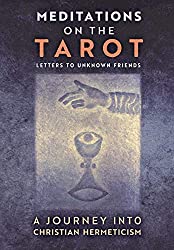
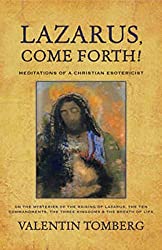

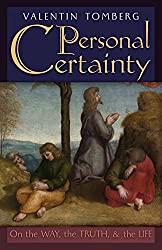
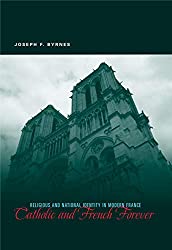
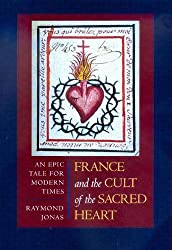
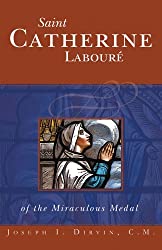

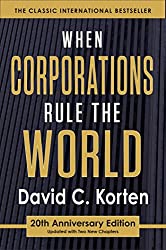

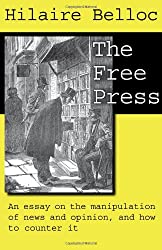
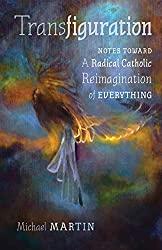




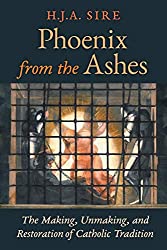

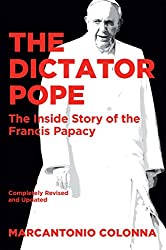
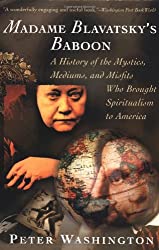
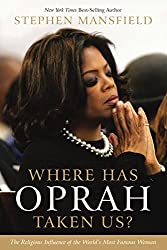
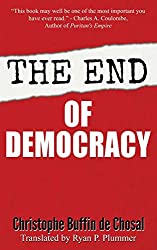


Comments
comments are currently closed
12 responses to “France, Steiner, Tomberg and the Da Vinci Code”
Thank you for these reflections. Before the turn of the millennium, I was living in Dublin and deeply involved in the New Age. I found MOTT in Easons on O’Connell St. and it changed my life. It effected an intellectual re-version back to Catholicism. I began to do the Spiritual Exercises of St. Ignatius with an old school Jesuit at Belvedere. The interior reality of the mass and the Eucharist opened up.
Today, I am an orthodox Catholic, charismatic, and have a deep interest in the liturgy (attending the extraordinary form regularly). Being a TLM goer and charismatic, crosses some cultural lines, Traditionalists generally speaking are very anti-charismatic. But I wouldn’t have an interest in the TLM but for the work of the Holy Spirit in my life.
All that is being said, towards encouraging you and your wife to attend the international conference (really contemplative retreat) of the Intercessors of the Lamb. These are Catholic Hermits who take the Ignatian Exercises to deeper levels. They are not perfect, and they are are young community, but I know of no other orthodox Catholic group that is forming the laity in the esoteric realities of the faith.
After reading your site, I’m convicted that you should make every effort to attend their international conference.
In the Joy of Jesus, in Mary.
http://www.bellwetheromaha.org/
I was brought up as a catholic and had the misfortune to attend catholic schools in the 50s and 60s. First in the the hands of the Sisters of Mercy (where one could experience emotional abuse)and then the De La Salle Brothers (where one did experience physical abuse). About 7 or 8 years ago an ex-pupil set up a web site for ex-De La Salle Sheffield pupils to reminisce about school days. About 500 people signed up representing the school from the 1940s to the 1970s. Many people wrote of their memories and I estimate 60% of them mentioned, among other things (I want to be fair), the physical and emotional brutality and vile supressed sexuality of these men who taught us and thought of themselves as men of God. The web site had to be taken down as the owner was fearful about the extremely negative content of the postings.
You will be aware of the stories of abuse by nuns and male religious orders which have made headlines in Ireland, Australia and America over the last 20 years.
I ask my self what sort of God is it that these people, who thought they were doing God’s work, worshipped? Well, you could say a catholic God. Not one who could by any stretch of the imagination be described as either good, merciful or loving. Powerful, – yes; cruel, – yes; filled with hatred of everything not under it’s control -yes! Christian? I would say, ‘No!’ Whatever they may have thought they were doing their actions showed that they worshipped Power. And I believe that is always the shadow (egregoire) of most forms of institutionalised religion, not just Catholicism.
Having said this I know, as an adult, that there are many good, honourable people within the church, but just as the Jews do not forget the the Holocaust (even though an individual Jew may forgive) I, and many like me, do not forget that the Catholic church has nurtured great evil within it’s breast.
The great french Platonist, Simone Weil, like Tomberg, could see the potential good in the church, but unlike him she was not swayed by the powerful sentiments evoked by the ritual and tradition and she never joined the church. In her writings, in many places she indicates clearly how she mistrusts the powerful allure of church whilst at the same time being able to appreciate the beauty and potential for spiritual development.
I can do this with many religions, for example, Islam. I can appreciate it’s potential and see how for individuals it can lift them spiritually, whilst at the same time I see clearly how it continues to allow the abuse of women and homosexuals. I regard it is a great blessing that I live in a secular society where such evil manifestations of religion are curtailled.
I have no problem, with people being Roman Catholics. I do believe that people should be free to find the religion (or no religion) that suits them – as you, living in a secular society, apparently did.
In your Tolle article you very clearly pinpoint some of the weaknesses of the ‘New Age’ movement. But in this article your language becomes impure when you begin to characterise Rudolf Steiner’s Anthroposophy as, ‘So-called esoteric christianity’ without saying what you mean. It is a form of name-calling. If you wish to serve the truth (I am the Way, the Truth and the Life) you need to practice right speech and this is not done by name-calling.
Tomberg makes very specific criticisms of anthroposophy, some of which you quote, but he does not, as far as I am aware, challenge the esoteric nature of Rudolf Steiner’s insghts into the spiritual realities underlying the Christ event. I would say that most of Tomberg’s early work and much of what appears in Meditations on the Tarot is quite clearly in harmony with Rudolf Steiner’s insights.
By all I have said I do not in any way wish to diminish your clear devotion to what you have found in Catholicism. It is a beautiful thing to read about. My encounter with Simone Weil helped me see that within a church that I experienced as evil there is also beauty and goodness and as a young adult I did try to build a mature relationship with the church but in the end I found my path elsewhere.
Best Wishes,
Peter Kelly
Thank you, Michael and Peter.
First thoughts to Peter: You have obviously suffered very deeply from these Catholic environments that you experienced first hand.
My heart goes out to you in these experiences, and those of your friends who suffered with you. You and they may well be feeling hurt for life. Or maybe much, much worse than that. And perhaps in ways that I cannot scarcely imagine …
It is not easy for me to comment on such experience – it being so lacking in my own. In the past eleven years, I have participated in countless Catholic contexts – including a community of nuns who housed me for seven months while I was homeless – and never experienced anything even remotely like this. Very much the reverse, in fact.
Yet I do not doubt your sincerity. It seems to me that in this fallen world, there are pockets of evil and cruelty to be found across countless cultures.
And that – of course – these pockets certainly exist within the Church. You and many others have honestly testified to it, I have no doubt. And there are also, for example the horrifying cases you mention in the particular countries: Ireland, the United States and Australia.
You write: “I, and many like me, do not forget that the Catholic church has nurtured great evil within it’s breast.”
Amen. One must never forget, I think or close our hearts in denial … This was one of the incredible beauties of the pontificate of John Paul II’s. The constant willingness to say “Mea Culpa, mea culpa, mea maxima culpa” for such evil. There is an entire book that might interest you or others in this regard: When a Pope asks Forgiveness by Luigi Accattoli, a whole book dedicated to this aspect of John Paul’s pontificate.
So there is one quandary I have Peter. How to honour your own experience – undoubtedly real and horrible and also honour my own experience – so, very, very different to yours. How to honour both – at one and the same time?
I suppose the way for me to embrace both is through trying to HOLD a sense of vastness …
Humanity as a vast, fallen collectivity with countless dark pockets of cruelty, across all divides, secular, religious, communist, etc … with say, secular institutions also filled with abuse … as well as countless other expressions, often beautiful and heroic.
The Church as containing a vast fallen collectivity with countless pockets of cruelty and also countless other expressions, often beautiful and heroic …
You and I have experienced very different aspects of the Catholic Church. You have a deep, ongoing suffering with these two institutions, that you mention. I have in addition to the care and love of the sisters I just mentioned, years of experience with numerous Catholic parishes, monasteries, convents – as well as six months in an Irish Catholic college, that will remain forever a light of inspiration to me.
Again, our experiences are so very different. But I must aspire to listen to yours as deeply as I can, while honouring the fact that in my own experience, it does seem isolated and relatively unusual.
Although across such a vast fallen collectivity as Catholics constitute, I am sure there have been countless fallen pockets for which I would want to join John Paul in asking for forgiveness.
I will move on. Regarding you saying:
“But in this article your language becomes impure when you begin to characterise Rudolf Steiner’s Anthroposophy as, ‘So-called esoteric christianity’ without saying what you mean. It is a form of name-calling. If you wish to serve the truth (I am the Way, the Truth and the Life) you need to practice right speech and this is not done by name-calling.
I need to reflect more here, Peter. I agree deeply with you about right speech, and if this is inflammatory “name-calling”, without saying what I mean I apologise.
At the moment, I tend to think it is not that. That the reasons are given in the whole context of the piece, including what I quoted from Valentin Tomberg himself: “Christianity … is one and indivisible. One should not – one cannot! – separate from so called exoteric Christianity … so-called esoteric Christianity. Esoteric Christianity is entirely within exoteric Christianity; it does not exist – and cannot exist – separately from it.”
This is last thing at night. I need to pray and ponder your comments further, however. And if I have descended into name-calling, ask your forgiveness.
Finally for the moment, I will comment on you saying:
“Simone Weil, like Tomberg, could see the potential good in the church, but unlike him she was not swayed by the powerful sentiments evoked by the ritual and tradition”
Obviously as my whole piece suggests, in my view, there is far, far, far more to Valentin Tomberg’s Catholicism, than his being “swayed by … powerful sentiments.” Equally obviously I would hope, in my view, such a statement constitutes a profound misunderstanding of Tomberg.
I might close by saying Valentin Tomberg’s Catholicism, it seems to me, involved a profound fighting for freedom, a freedom I believe he would seen endangered by the kind of secularism you might be championing (?).
The question mark is very needed here! I would need to know more what you meant by “secular society”. Certainly the secular society I see is indeed curtailing certain evil manifestations of religion. While at the same time, it is also promoting and advancing many evil manifestations of its own, which rob freedom and life …
I believe both Rudolf Steiner and Valentin Tomberg were trying to save us from the freedom-destroying secular kind of society we have now developed and when Valentin Tomberg grasped “the tragedy of Anthroposophy”, he turned to the Church as the only way to ensure continued freedom … His Catholicism was not sentimental, but filled with profound compassion for the road he saw humanity was taking …
Complex things, with great need of clarification and definition of terms like “secular” and “freedom”. And more than I can manage in a comments box. But calling for ongoing prayer and thinking, thinking … Thank you for continuing to call me to that, Peter.
Michael, right now, I felt I needed to respond to Peter’s pained and horrified comments about evil in the Church.
That does not mean I am unmindful or ungrateful for your comment. Far from it! Very interesting indeed, and I will be looking further into what you write, definitely looking further.
Thank you, unknown friends.
Thank You for your gracious reply. Warmth of heart is a great healer. I wish you and your wife well in all your endeavours.
Peter
Thank you for this kindness, Peter. I appreciate any and all feedback here at this site. This is because this site aspires to be Kim´s and my own humble contribution to the kind of world-work that, for example, the towering moral genius of Valentin Tomberg was committed to. Another example would be that of the Holy Father … Still however humble my own efforts in this regard certainly are – they can only proceed through a process of contemplation and listening, listening … I am thus aspiring to listen carefully to all comments received to help me steer this in the most creative and responsible direction I can find.
god bless you.the one true church is blessed by your presence.philip.
Philip, thank you for this kind feedback, though I appreciate ANY feedback as to how these webwritings speak to people.
In contradistinction to the Protestant bodies which many call “churches”, I note that the Holy Father seems to prefer the term “ecclesial communities”. Which acknowledges both their relationship to the One, Holy, Catholic and Apostolic Church, while at the same time acknowledging that they are something different, stripped by their own volition of so many dimensions of what originally constituted the Church – eg the Marian dimension, communion of Saints, hierarchy and the fullness of the seven sacraments to name but a few.
The Holy Father I know is seen by many as “non-ecumenical” for emphasising in such ways the original definition of what constituted the Church, but if we are to save this Church from further destruction, it is necessary to be clear about the above considerations … as you indicate.
All of this is not to say that the ecclesial communities do not serve to orient people to Jesus Christ or ennoble them.
Finally Philip, your link looks interesting indeed, but alas I think you have not entered it correctly. And God bless you …
[…] My reading includes sources from the Right and Left, from the secular and religious, from New Age and Catholic. It includes real indebtedness for example to non-denominational Christian psychotherapists such as M. Scott Peck and Robert Sardello as well as to the Catholic Valentin Tomberg, whose legal writings contain nothing but orthodoxy, but whose Lazarus Come Forth is again, less than completely orthodox – even while he powerfully advocates a very traditional Catholicism, which he sees compromised by Vatican II (Some extracts about this and about Tomberg´s judgment of Vatican II can be found in the afterword to a long article here). […]
[…] Link: https://corjesusacratissimum.org/2009/06/pointing-and-stammering-french-noel-2006/ […]
Very incisive understanding of the issue: in a nutshell, whether to choose New Age or Tradition. Would I be too far off the mark if I put it this way: whether to stand with Steiner or with de Maistre?
Huge topics here. Starts with meditation on the Eucharist, linking it to concentration without effort, or drinking the silence.
Then a critique of the New Age and liberalism: Applying it to the Church: whether to open up to modernity or return to Tradition. Finally, the hard one: bringing the esoteric and exoteric together. Outside the Church, the esoteric lacks grounding and is too airy. Yet the Church is uncomfortable with it. You have taken on a large project, Sir.
Yes indeed, Cologero huge topics. And I thank you warmly for engaging with them.
Again more is here than I can easily address in in this comments space. But I prefer to stand with the Church rather than any single individual.
I certainly do not stand with Steiner’s Anthroposophy … It thorough-going rejection of the Catholic Faith alone would be sufficient cause to refuse to stand. But of course there is far more that is problematic with Steiner.
In terms of De Maistre, I find myself thinking of St. Augustine. The Church deeply appreciated what this great and holy intellect had to say in refuting the Pelagian heresy.
Nonetheless as appreciative as the Church was in terms of St. Augustine’s profound contribution, in the end it chose not to go as far as St. Auguestine, which might have led to a Calvinistic pre-destination kind of doctrine.
I do not know De Maistre well enough to comment yet. But I wonder if a certain degree of analogy with St. Augustine pertains here.
The Tridentine Ultramontanism that was once so determinedly counter cultural owes far more to him than many realise, and yet the Church cannot endorse all he stood for.
These comments of my own however are still “too airy” to borrow your own phrase. I need more time to think and educate myself here.
I regret my long delay in answering due to many pressures, but again thank you most warmly.
[…] Later, he will speak of Extra Ecclesiam Nulla Sallus. (I have posted his comments in the Afterword to the long article here). […]